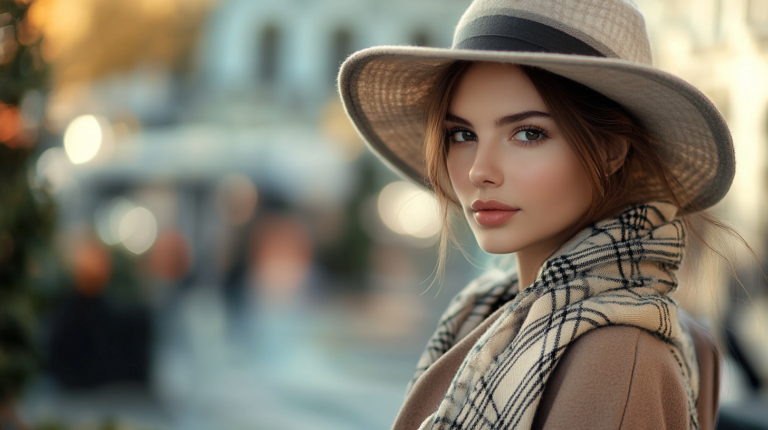“What is Contemporary literature?”, the body of written works from the post-World War II era to today, offers a window into the modern human experience. This article will guide you through the defining characteristics of contemporary literature, showcasing how it mirrors our rapidly evolving society. Discover how contemporary writers tackle themes like identity, technology, and global issues, providing both reflection and direction in a world brimming with change. Engage with the stories that shape our current narrative and find your own place within the rich tapestry of today’s literary landscape.
Defining What is Contemporary Literature
When we explore what is contemporary literature, we dive into a vibrant tapestry of narratives and styles that reflect our ever-evolving world. Whether it’s the gripping tale of a novel, the delicate verses of poetry, or the captivating layouts of graphic novels, contemporary literature is a mirror to our times, capturing the complexities of life since the mid-20th century.
Contemporary literature is a vibrant reflection of our ever-evolving world, capturing life’s complexities through diverse genres and forms. Notable for its depth and variety, it includes fiction, memoirs, and graphic novels, with literary movements like postmodernism influencing its narrative styles. It’s a realm where magical realism and metafiction challenge perceptions, and themes of identity, race, gender, and the environment are explored with urgency and innovation.
Genres and Forms
In contemporary literature, we encounter a plethora of genres catering to diverse readerships. At the heart of these genres is fiction, often presented through the emotive journey of a novel. Novels grant us the luxury to lose ourselves in imagined spaces, sometimes even offering the thrilling escapes of science fiction. We also see a rise in Young Adult (YA) Fiction, a genre that not only captivates the youth but also adult audiences with its bold themes and relatable characters.
Here are some more important Genres of Contemporary Literature:
- Memoirs and Autobiographies offer a true window into the lives of others, providing raw, personal insights
- Literary Fiction is renowned for its depth, character development, and focus on intricate themes
- The realm of graphic novels has expanded, combining visual art with storytelling to produce an immersive experience
Literary Movements and Styles
As we discuss contemporary literature, it’s essential to recognize its influential literary movements and styles. The eclectic nature of contemporary literature is partially an extension of postmodernism, characterized by fragmented narratives, unreliable narrators, and metafictional techniques.
- Experimentation with narrative structure and the blurring of genre boundaries are trademark moves within contemporary works
- The use of diverse, multicultural voices has enriched contemporary storytelling, allowing us to embrace a global perspective
By understanding the diversity in genres, forms, and movements, we get a clearer image of what contemporary literature entails—connecting various threads of human experience in innovative and transformative ways.

Historical and Political Context
We’ve witnessed how the turbulent tides of the 20th and 21st centuries, particularly the wars and political unpredictability, have immeasurably influenced what is contemporary literature today. These events have not just reshaped borders and governance; they’ve also deeply affected the psyche and thematic weight of literary works.
Influence of World Wars
World War II was a seismic event that irreversibly altered global dynamics. The post-war period saw a surge of literary works reflecting on the human condition amidst destruction and upheaval. Writers harnessed their art to grapple with the atrocities of war and the profound psychological impacts on society. The Diary of a Young Girl by Anne Frank and Catch-22 by Joseph Heller are prime illustrations of literature that capture the essence of a world at war, emphasizing the tragic consequences and absurdity of such conflicts.
Political and Social Unrest
Beyond the battlefields, the political realm reverberated through the pages of contemporary works. Authors delved into themes of political corruption, social inequality, and terrorism, exposing the intricate connections between governance and the individual. The Cold War era fueled a genre of literature that examined the spy games and ideological clashes between superpowers.
- 1984 by George Orwell tackled the dread of an insurgent totalitarian state
- Beloved by Toni Morrison opened our eyes to the lingering scars of slavery and systemic racism
- Arundhati Roy’s The God of Small Things highlighted societal changes and political issues in India
With every stroke of their pens, these authors documented history’s shadows, using literature as a platform to challenge and reflect on our collective experiences.

Renowned Authors and Works
When we dive into what is contemporary literature, we’re often met with an abundance of vibrant narratives and profound voices that have left indelible marks on our cultural landscape.
Influential Writers
- Gabriel García Márquez: A titan of Latin American literature, his magical realism has influenced countless authors
- Laura Restrepo: Known for her emotive portrayals of life in Colombia, Restrepo’s narratives are rich tapestries of social and political commentary
- Octavio Paz: The Nobel Prize-winning poet and essayist has deeply influenced both Mexican and international literary circles
Seminal Publications
- The Kite Runner by Khaled Hosseini: An Afghan-American’s poignant novel that unveils the complexities of betrayal and redemption
- The Brief Wondrous Life of Oscar Wao by Junot Díaz: A tale that weaves the American experience with Dominican history
- The Underground Railroad by Colson Whitehead: A powerful reimagining of the historical escape route for slaves in the American South
These authors and their works are cornerstones, providing us insight into the human condition and the societies in which they are set. Through their stories, we travel from Afghanistan’s war-torn streets to Colombia’s vibrant neighborhoods, from poetic reflections of life in Africa to the imagined historical paths of the Underground Railroad.

Pinterest ~ Gabriel García Márquez
Cultural and Social Themes
When we explore what is contemporary literature, we uncover a tapestry woven with rich threads of cultural and social themes. It’s here, in this vibrant literary landscape, where voices and narratives come alive, addressing crucial aspects such as race, gender, class, and environmental issues, all filtered through the lens of contemporary life and technology.
Exploring Identity
In our journey through contemporary literature, we often encounter characters grappling with their identity. It’s a reflection of our society’s ongoing dialogue about race and gender, where writers boldly navigate the intersecting pathways of self-discovery and social constructs. Such narratives not only mirror our own quests for understanding but also shape the psychology of our communities.
- Race: Stories that challenge racial stereotypes and encourage diverse representation
- Gender: Works that defy traditional gender roles and promote gender equality
Environmental Concerns
Our responsibility towards the environment is a critical issue that contemporary literature doesn’t shy away from. We see authors urgently voicing the anxieties surrounding climate change and environmental degradation, compelling us to reflect on our own impact on the planet.
- Climate Change: Characters and settings affected by the stark realities of a warming planet
- Sustainability: Plots centered around ecological conservation and the consequences of human actions
Through these themes, contemporary literature becomes a mirror, revealing the complexities and challenges that define our era.

Pinterest ~ Khaled Hosseini
Narrative Techniques and Experimentation
When we consider what is contemporary literature, we’re often grappling with works that push the boundaries of storytelling.
Narrative Innovation
In recent literary trends, realism has taken on new dimensions, with writers infusing their work with elements of magical realism to transport readers beyond the ordinary. Modernist literature, for example, laid the foundation for breaking conventional narrative structures, engaging readers with disjointed timelines and multiple perspectives. Today’s authors build on this legacy, introducing stream-of-consciousness and unreliable narrators that challenge our perception of reality.
- Stream of Consciousness: A non-linear narrative reflecting a character’s inner thoughts
- Unreliable Narrator: A character whose storytelling credibility is compromised
Crossing Boundaries
The blurring of reality and fiction is a hallmark of contemporary literature, ushering us into a space where the extraordinary melds seamlessly with the mundane. From the rich landscapes of Gabriel García Márquez’s novels to the intricate worlds of Haruki Murakami, magical realism serves not just as an aesthetic, but as an instrument to question and reshape the fabric of reality.
- Magical Realism: Incorporates magic into real settings, creating a layer of the fantastic
- Metafiction: Literary works that self-consciously address the devices of fiction, blurring truth and imagination
By embracing these methods, we find ourselves in a narrative playground that continually redefines what is contemporary literature.

Pinterest ~ Junot Díaz
Evolving Literary Forms
When we explore what is contemporary literature, we’re delving into an evolving landscape where literary forms continue to expand and transform. The boundaries that once defined genres and structures are being reshaped, offering new ways for us to experience storytelling.
Non-traditional Structures
In the realm of essays and novels, especially within genres like fantasy, romance, and mystery, we’re witnessing a shift towards non-traditional structures. Narratives no longer follow a strictly linear path and instead may present stories in fragments or from multiple perspectives. Bold experimentation with form allows authors to reflect the complexity of modern life, and readers are challenged to piece together the puzzle.
- Fragmented narratives: presenting the story out of chronological order
- Multiple perspectives: using various characters’ viewpoints for a holistic view
- Metafiction: stories that self-reflectively address their own artificiality
Digital and Interactive Literature
The rise of digital platforms has given birth to interactive literature, where the reader becomes an active participant. This could mean choosing the direction of a story in an ebook or experiencing a narrative through a video game.
- Choose-your-own-adventure ebooks: readers make decisions that influence the outcome
- Literary video games: combining gameplay with narrative elements for immersion
Contemporary literature’s ongoing evolution is a testament to the limitlessness of human creativity, ensuring every journey through the written word is as unique as the minds that wander its paths.
Challenges and Future Directions
In exploring what is contemporary literature, we must consider the dynamic landscape it inhabits. Our literature reflects and shapes our moral compass while grappling with the complexities of a changing world. It’s a conduit through which we explore the burgeoning ethical dilemmas and confront the stark realities of our environment.
Ethical Questions
Contemporary literature often examines the fabric of our ethics, probing deep into issues that define our humanity. It raises questions about our responsibility toward one another in an increasingly alienated world. Take, for instance, the representation of dystopia in current narratives, which serves not merely as entertainment but as a mirror to our potential moral failings and a warning of what might befall us if we lose our ethical way.
- Moral Complexity: Characters are no longer just heroes or villains; they are humans with complex moral landscapes that challenge the reader’s own values
- Choice and Consequence: Stories delve into the ambiguity of choices, revealing the consequences that stretch beyond the page and into our own lives
Literature in the Climate Crisis
The role of literature in addressing the climate crisis is paramount. It is a vehicle for fostering understanding and stirring us to action. By imagining worlds ravaged by environmental disasters, contemporary works compel us to confront the imminent dangers and to consider the legacy we wish to leave for future generations.
- Environmental Advocacy: Works that incorporate themes of climate change to draw attention to the urgency of the crisis
- Vision of The Future: Futuristic scenarios that serve to both warn and guide us towards a more sustainable path, avoiding an ecological dystopia
Our Tips For Contemporary Literature
Here are my Top Picks when it comes to Contemporary literature:
- Keep it Diverse: Just as our world is a beautiful mosaic of cultures, contemporary literature thrives on variety. You’ll find this in Haruki Murakami’s “Kafka on the Shore”, a mesmerizing tale that fuses reality with the mystical
- Explore Complex Characters: Seek stories with characters that challenge you, like Margaret Atwood’s “The Handmaid’s Tale”, which plunges into themes of power and identity through its rich character development
- Embrace New Genres: Don’t be afraid to step outside your comfort zone. Try a suspense-filled journey with Stephen King’s “The Shining”, where psychological horror is penned with a master’s touch
- Trace the Evolution: It’s intriguing to see how authors evolve. Observe the growth from J.K. Rowling’s Harry Potter series to her adult fiction work—a journey from magical adolescence to complex adulthood.
Remember, contemporary literature is a reflection of the times. It’s about keeping your finger on the pulse of society while immersing yourself in different perspectives.
FAQ
What is the meaning of contemporary literature?
Contemporary literature refers to written works produced after World War II, reflecting modern-day themes and current history.
What makes contemporary literature differ from other literature?
Contemporary literature often breaks with tradition, experiments with new styles, and incorporates elements from everyday life, such as cinema, to reflect current issues and realities.
What is meant by contemporary world literature?
Contemporary world literature encompasses modern works from various cultures and languages, reflecting diverse perspectives and experiences from 1900 to the present, including modernism, postmodernism, and magical realism.
What are the main characteristics of contemporary literature?
Contemporary literature often features diverse perspectives, fragmented narratives, and explores current issues with a focus on individualism and realism.
If this blog post on “What is Contemporary Literature” resonated with you, we’d love to hear your thoughts. Feel free to share your experience in the comment section below.
If you want to keep reading more from us, have a look at these articles.





